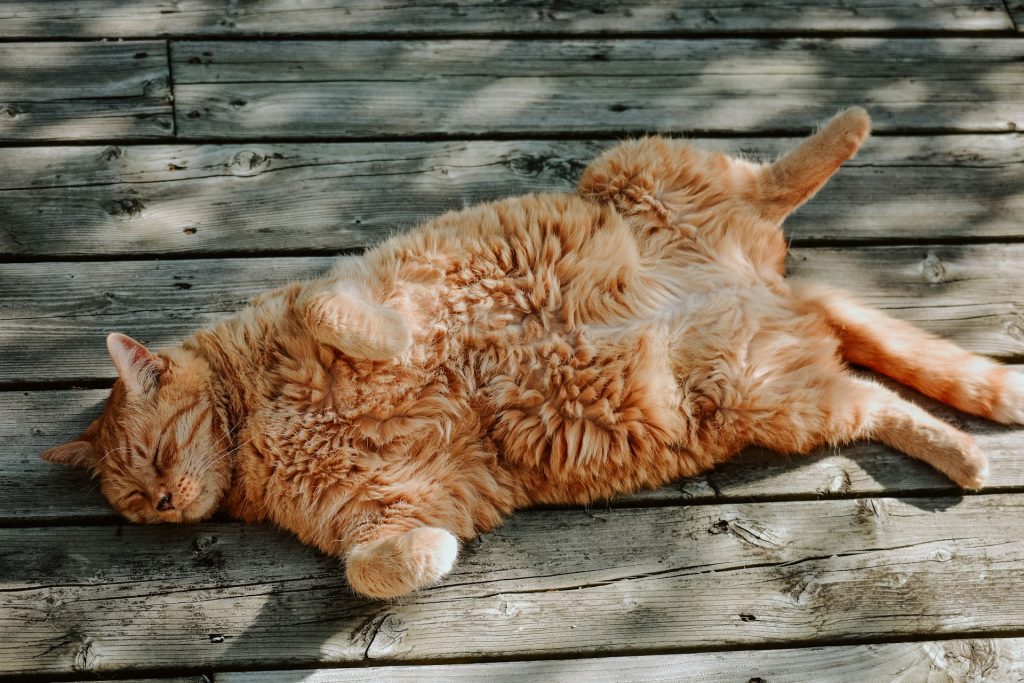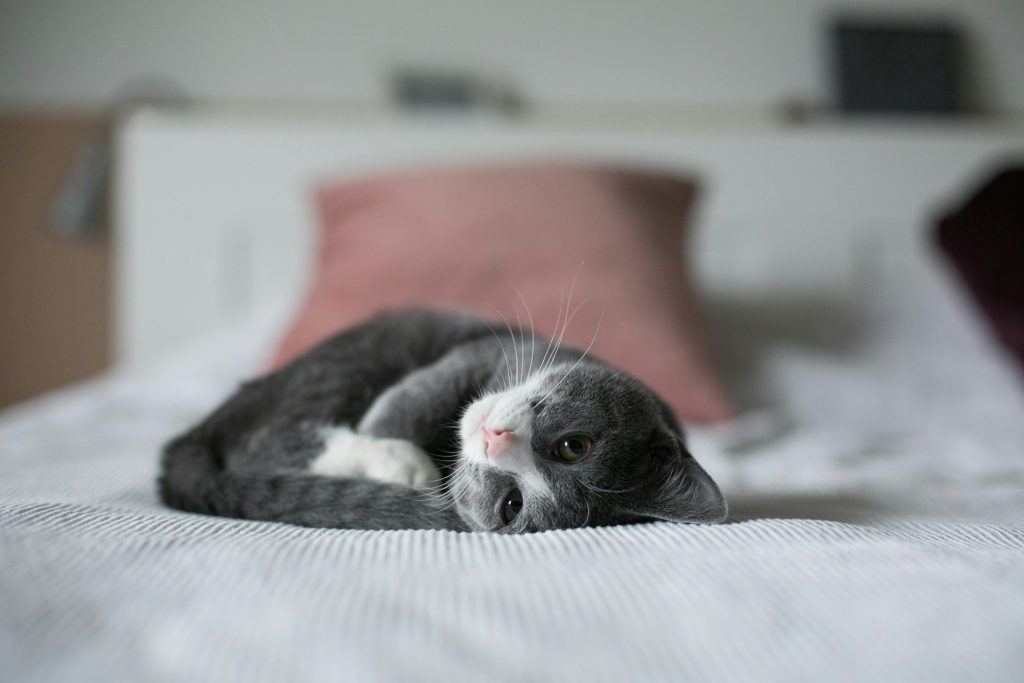Table of Contents
Many cat owners revel in the soothing sound of their feline friend’s purr, a hallmark of contentment and comfort. However, some guardians face the puzzling scenario where their cat is purring without a whisper of sound. This silent purring leaves owners questioning whether their cat purrs at all. While one cat may fill the room with its resonant purring, another may be a silent purrer, expressing its contentment inaudibly.
The reasons for this silent expression can range from individual behavioral traits to more concerning health issues. It’s crucial to observe closely, as a cat that does not emit the typical purring sound may still be engaging in the act of purring, perhaps just beyond the range of human hearing. Understanding this mysterious behavior demands a deeper look into the nature of purring itself and the factors that can influence its audibility.
The Essence of Purring in Feline Communication
Cats communicate in many ways, with purring serving as a complex vocalization that conveys a range of emotions and intentions. A purr can signify satisfaction, a request for attention, or even serve as a self-soothing mechanism. While vocalizations like meows are more direct, purring is a more subtle and continuous signal that plays a vital role in the intricate tapestry of feline communication.
Understanding the Mechanics of Purring
The purr is produced through a combination of involuntary neural oscillations and the voluntary movement of muscles within a cat’s larynx and diaphragm. As they inhale and exhale, the vocal cords separate and come together in a rhythmic pattern, creating the characteristic vibrating sound. This widely held understanding of the mechanics of purring reveals the intricate biological design that enables cats to produce this unique vocalization.
Expressing Contentment and Safety
Purring is often associated with a cat’s expression of contentment and a sense of security. When a cat purrs, it is typically a sign that they feel at ease in their environment, whether lounging in a sunbeam or curled up on a lap. This behavioral manifestation is one of the ways cats communicate their satisfaction with their surroundings and their trust in those around them.
Signaling Affection Toward Humans
A cat’s purr can also be a direct signal of affection towards their human companions. This audible gesture enhances the bond between the cat and owner, reinforcing positive interactions and contributing to the mental health of both parties. However, when a feline friend’s purr is not heard, it’s important to look for other signs of affection to ensure the relationship remains strong and nurturing.
Self-Soothing in Stressful Situations
Cats may also engage in purring to soothe themselves during stressful or anxiety-inducing situations. Although purring is often seen as an indicator of happiness, it can also be a coping mechanism for a cat feeling ill or injured. In these instances, the vibrations produced by purring may serve as a form of self-comfort, helping to alleviate the discomfort and calm the nerves.
Indicating Illness or Discomfort
It’s essential to consider that a cat purring could also indicate illness or discomfort. If a cat continues to purr while showing signs of distress, it may be an attempt to self-soothe. Owners should be attuned to these cues and not dismiss persistent purring as merely a sign of contentment. In such cases, it may be necessary to visit the vet for a check-up to rule out any underlying health issues.
The Evolutionary Significance of Purring
The widely held belief is that the purr is produced by the vibration of a cat’s vocal cords as they inhale and exhale. This remarkable vocal feature may have evolved as a means of communication and self-healing. While purring is complex, involving messages from the brain to the larynx and diaphragm, it’s fascinating that not all big cats can purr. This suggests that the ability to purr may have offered specific evolutionary advantages to certain felines.

When Silence Speaks: Why Some Cats Don’t Purr
While cats do purr in response to contentment, the absence of purring may release endorphins that serve different functions. New-born kittens rely on the vibrations of their mother’s purr to guide them when they are vulnerable. Therefore, a cat’s silence can be as telling as their body language, potentially indicating stress or an alternative method of self-soothing.
Individual Behavioral Traits
Just as humans have individual personalities, cats exhibit several behavioral traits that can influence their tendency to purr. Some felines may express their contentment through purring, while others might choose different forms of body language to communicate their satisfaction or affection to their owners.
Past Trauma or Stress
Cats that have experienced past trauma or high levels of stress may alter their purring habits. These experiences can leave a lasting impact on a cat’s behavior, potentially leading to a decrease or complete cessation of purring as they associate it with memories of past discomfort or fear.
Medical Conditions Impacting Purring Ability
Health issues can impair a cat’s ability to purr. Conditions affecting the vocal cords, respiratory system, or even neurological disorders can influence the mechanics behind purring. Cats suffering from such medical conditions may find it difficult or even painful to engage in what is typically a natural and soothing behavior.
Aging and Changes in Purring Habits
As cats age, their purring habits may change. While it is rare for an older cat to stop purring due to age alone, changes in health, such as a weakened larynx or other age-related conditions, can influence their ability to purr as they once did.
Assessing Your Cat’s Non-Purring Behavior
When a cat does not purr, it is important to assess their overall behavior and health. Observing changes in appetite, activity, and interaction can provide clues to whether the lack of purring is a sign of a deeper issue.
Observing Other Forms of Communication
Even without purring, cats communicate through a rich vocabulary of body language. Tail movements, ear positions, and facial expressions can all convey a cat’s emotional state and intentions, offering insights into their well-being.
When to Consult a Veterinarian
If a cat’s non-purring behavior is accompanied by other signs of distress or changes in habits, it is advisable to consult a veterinarian. A professional can determine if the silence is a symptom of an underlying health issue that requires attention.
The Healing Power of Purring for Cats and Humans
Purring has been shown to not only benefit cats but also to have a healing effect on cat owners. The frequency of a cat’s purr can play a role in lowering stress and improving mental health, making the feline-human bond a mutually beneficial relationship.
The Therapeutic Effects of Purring on Feline Well-Being
Cats purr for various reasons, ranging from expressing comfort to self-healing. The act of purring can act as a natural pain reliever, reducing stress and promoting recovery from injury. The consistent rhythm and vibrations can also serve as a form of communication with their human companions and other cats.
How Cat Purrs Positively Influence Human Health
The presence of a purring cat has been linked to positive effects on cat owners’ mental health. The soothing vibrations can aid in lowering stress levels and promote a sense of calm and well-being in their human counterparts.
Reducing Stress and Lowering Blood Pressure
Purring has a biologically calming effect on both cats and humans. For cat owners, the gentle hum of a cat’s purr can lead to a reduction in stress and lower blood pressure, contributing to a healthier lifestyle.
The Comforting Effect of Purring on Pet Owners
The rhythmic sound of a cat purring can provide immense comfort to pet owners. This simple act of a cat expressing contentment or seeking closeness can create an emotional bond and offer a sense of peace and relaxation to those in its presence.

Can You Encourage Your Cat to Purr?
While it is normal for some cats to purr as a means of communication, not all felines exhibit this behavior. It’s important to recognize that cats do purr in varying degrees, with some being naturally quieter or even silent. Environmental factors, such as feeling secure and stress-free, can influence a cat’s propensity to express itself through purring. If your cat has suddenly ceased purring altogether, it may be indicative of health issues, warranting a veterinary consultation. However, there are nurturing steps owners can take to potentially encourage their cats to purr, fostering a deeper connection with their pets.
Techniques to Stimulate Purring in Your Cat
Encouraging cats to purr may involve a combination of approaches. While lions can’t purr due to anatomical differences, domestic cats generally can, and creating a serene and inviting atmosphere is key. Gentle interactions, consistent routines, and responsive care can contribute to a cat’s comfort, potentially leading to more frequent purring. It’s essential to observe your cat’s body language and respond to its unique needs and preferences, as each cat is an individual with its way of expressing contentment and affection.
Providing a Comfortable and Safe Environment
Cats thrive in environments where they feel safe and comfortable. To encourage your cat to purr, consider its immediate surroundings. Ensure your cat has a cozy place to retreat, free from loud noises and disruptions. Soft bedding, access to clean water and nutritious food, and a litter box situated in a quiet area can all contribute to a sense of security. Additionally, familiar scents and a stable temperature can help to create a sanctuary that is conducive to relaxation and, in turn, purring.
Engaging in Bonding Activities
Bonding activities can also catalyze for cats to purr. Spending quality time with your feline friend, such as through gentle petting, brushing, or playing with toys, can strengthen your bond and instill a feeling of contentment. Observing your cat’s reactions to different types of affection will inform you about its preferences. Consistent, positive interactions not only promote a trusting relationship but also increase the likelihood of your cat expressing its happiness through purring.
When Positive Reinforcement Doesn’t Lead to Purring
Positive reinforcement is often effective for training and encouraging certain behaviors in pets, but it may not always result in a cat purring. Pet parents might find that despite providing treats, affection, and a warm lap, their cat remains silent. It’s essential to understand that each cat has a unique personality and some may not express contentment through purring. Instead, they may show their happiness in other ways, such as a slow blinking of eyes or a gentle head butt. If a cat is content and healthy but does not purr, it’s simply a trait of their character.
Conclusion: Embracing the Quiet Mystique of Your Feline Friend
As cat owners, it’s important to become fluent in the language of your cat’s body, observing their behavior to discern their well-being. Developing this understanding can deepen the bond you share. Moreover, protecting your silent companion with cat insurance is a prudent step to ensure that any non-purring related health concerns are addressed promptly, ensuring your pet’s happiness and health for years to come.
The absence of a purr doesn’t diminish the special connection shared with your cat. This silent bond transcends the need for sound, as the presence of a cat can offer immense comfort and therapeutic benefits. From lowering stress to aiding in physical healing, the quiet companionship of a feline friend is something to be cherished and celebrated, as it contributes to a serene and healthy home atmosphere.
When a cat has stopped purring, it doesn’t necessarily indicate a lack of communication or affection. Cats possess a myriad of ways to express themselves, and each one has a distinctive voice, even in silence. Appreciating these differences is key to a harmonious relationship with your pet. It’s not only about the sounds they make but also about understanding the nuances of their personality and the various ways they convey their feelings.

Hi, I’m Zoey, a devoted mom to two charming Siamese cats. My passion lies in assisting fellow pet owners in providing optimal care for their cats. On CatsEuphoria, I share practical tips and relatable stories, inviting you to join me in appreciating the authentic bond between humans and our beloved feline companions.




